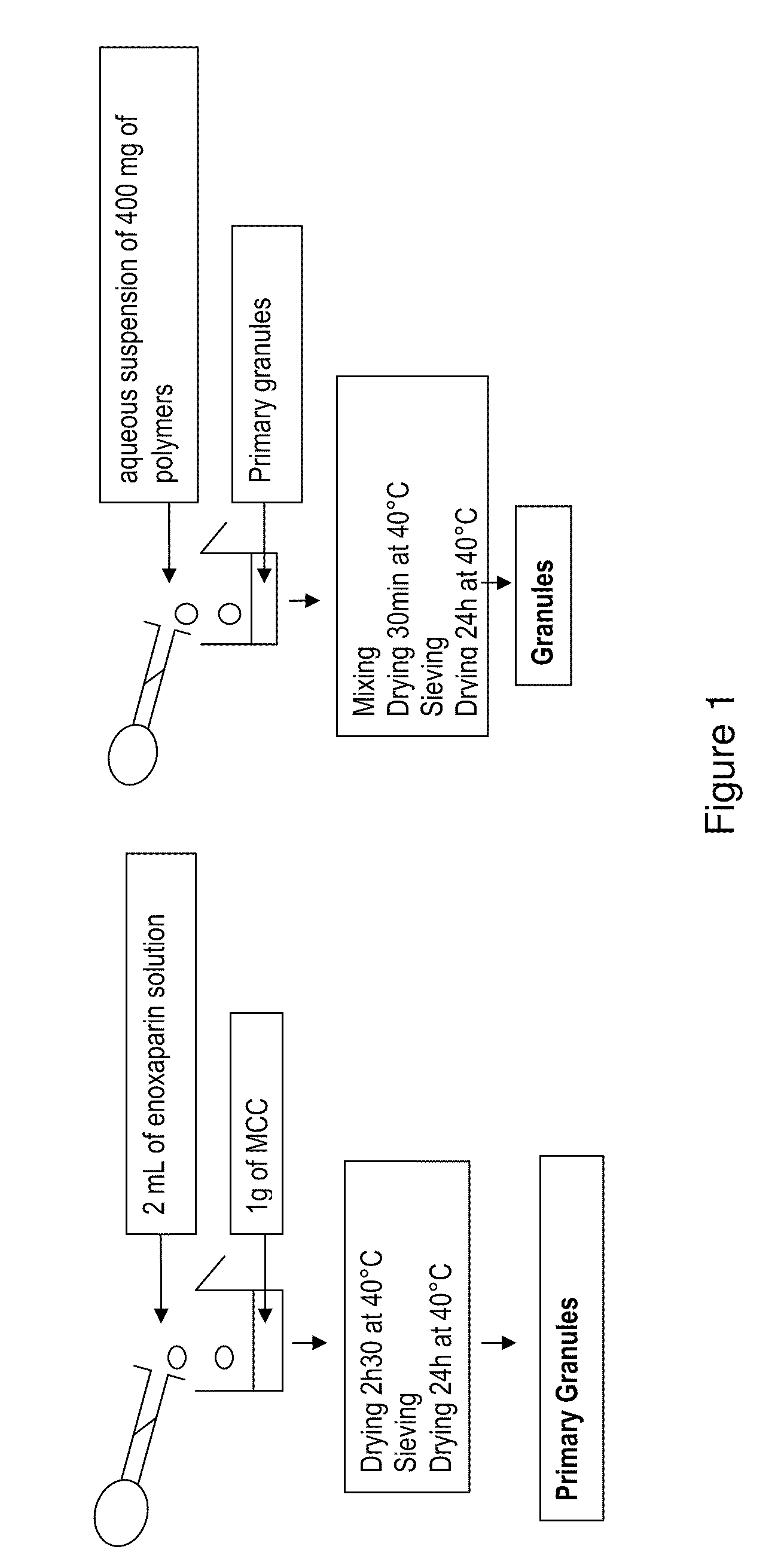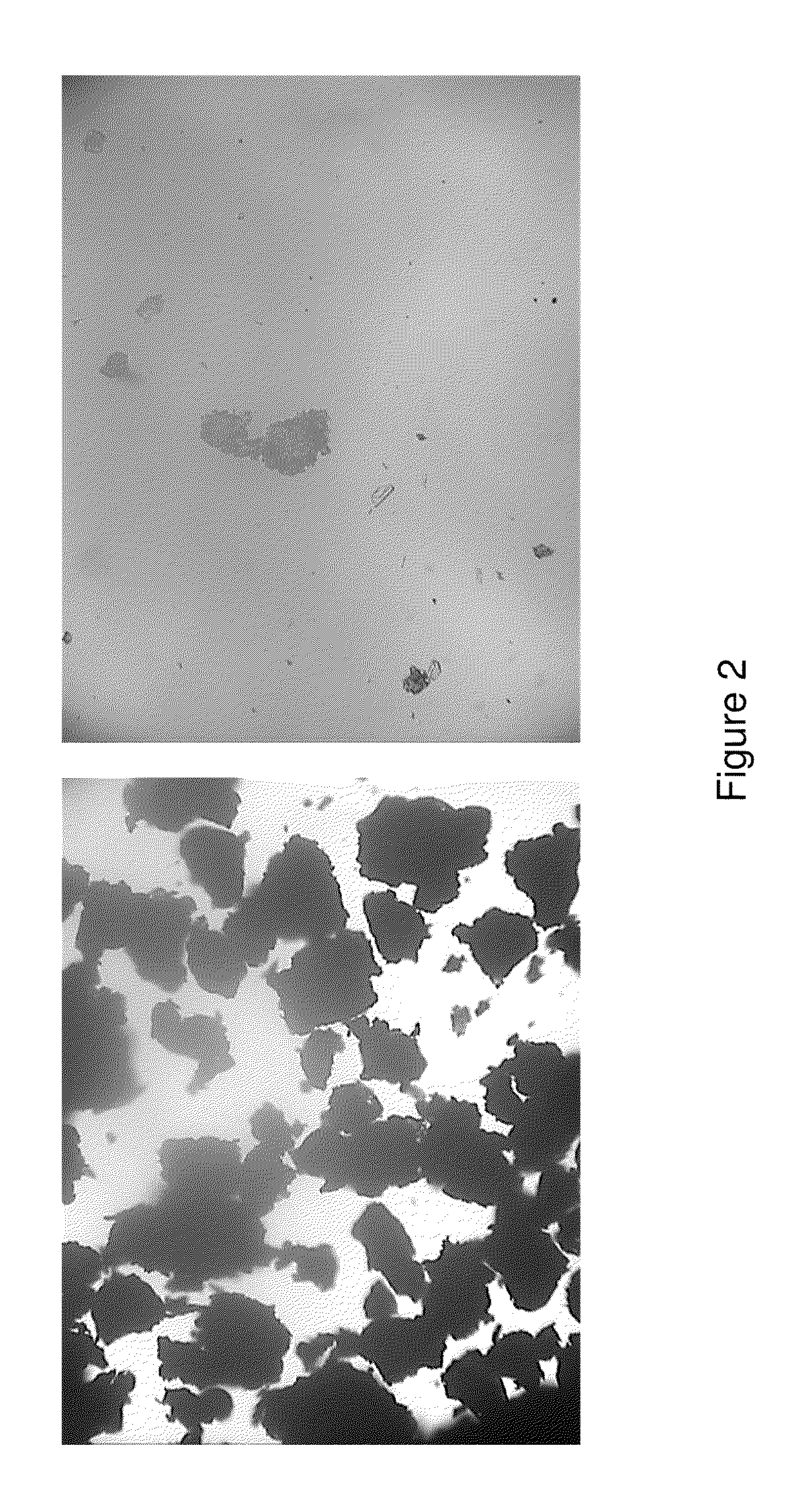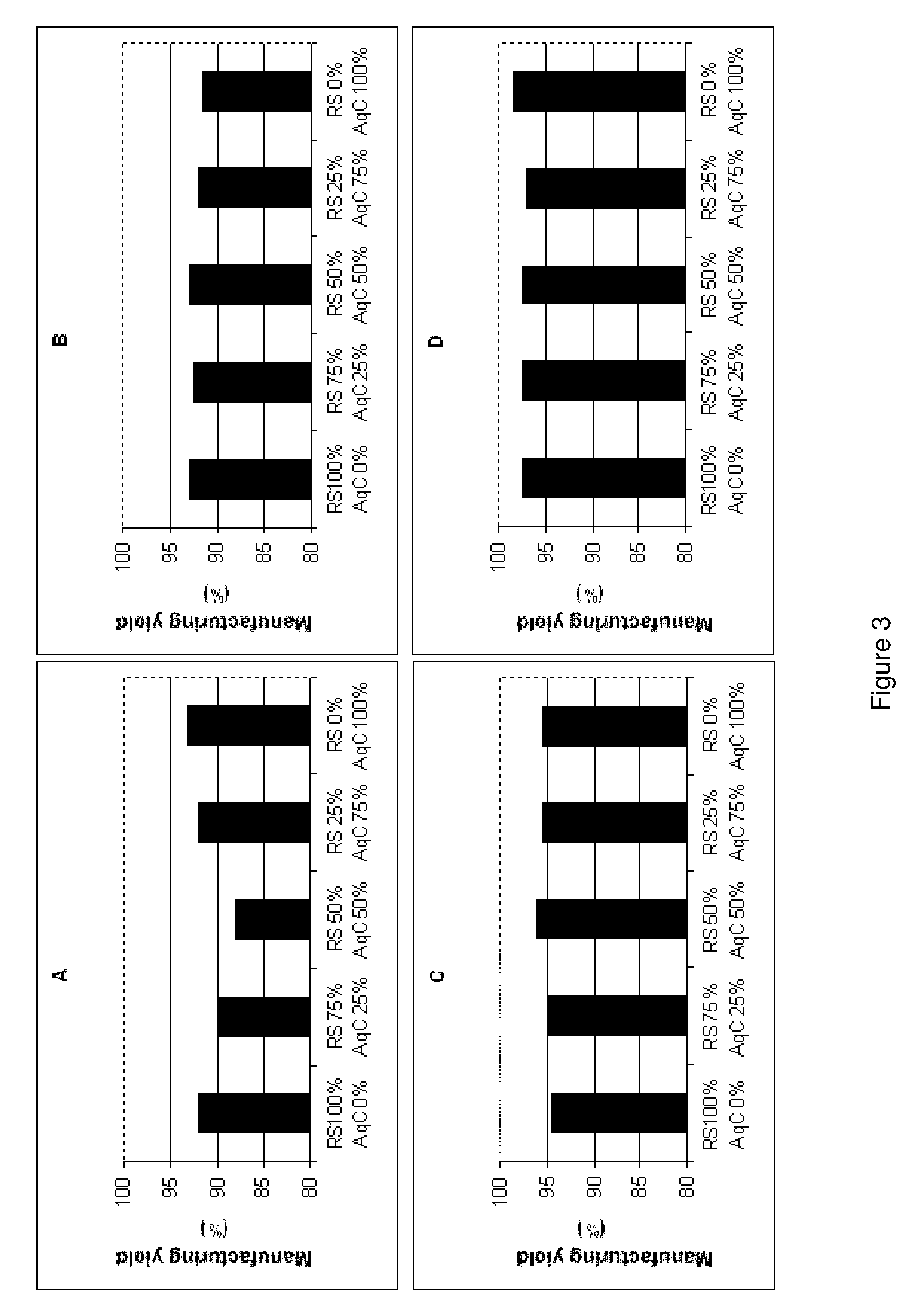A problem which has been posed in recent years in the pharmaceutical sector is that there is a great variety of active compounds which are characterized fundamentally, in that they cannot be administered by
oral route.
Since
heparin acts on the coagulation factors by a
catalysis mechanism mediated by ATIII, the measurement of its
plasma concentration does not constitute an efficient means to determine its
biological activity.
However, there is no
insulin formulation on the market that can be administered by orally to provide sufficiently high bioabsorption, thereby highlighting the need for an oral
solid formulation.
Although some of these compounds can be administered orally, they have very low and / or very erratic
gastrointestinal absorption, which poses a serious problem for marketing these type of drugs, because the results obtained differ greatly from those expected due to their behavior in LADME (Liberation, Absorption, Distribution,
Metabolism and
Elimination) pharmacokinetic processes.
Furthermore, these macromolecules are hydrophilic and very poorly permeable across the mucosa, which results in low mucosal absorption, in the case of the
oral route.
This is worsened since these macromolecules have to pass through the
stomach.
The permeability of heparins through the digestive
epithelium is, therefore, very low, which makes the administration of
heparin / formulations containing
heparin by
oral route very difficult.
Nevertheless, a problem posed by non-oral routes of administration is that, in most cases, these treatments require long periods of therapy such as, for example, in some types of diabetes, for which treatment is needed for the entire life, the frequency of administration being daily.
Non-
oral administration is a great
disadvantage mainly for the patient, and for this reason, it is important to look for alternative routes of administration.
Fundamentally, the oral
route, which is the most convenient for the patient and the most economical, is preferred; however, for these types of molecules (mainly for oligosaccharides and proteins), designing formulations prepared to be administered by oral
route entails a problem and involves many complications, since the
gastrointestinal tract degrades these active compounds.
However, these devices are affected by physiological processes of
cell and mucosal turnover in the absorption
epithelium.
It is for this reason that the use of these devices has not yet managed to avoid the serious problem of variability between administrations, both in relation to the place of adhesion and the
contact time of the formulation with the absorption membrane.
Furthermore, microparticulate systems, which intrinsically bear a low content of active substance, have a lower encapsulation yield than particles of larger size.
Therefore, the amount of active substance they can incorporate is small.
However, these smaller size particulate systems have a series of drawbacks.
For microspheres, the main obstacle to achieving effective parenteral systems is the degradation and subsequent non-specific
elimination by the reticuloendothelial systems, despite the fact that attempts have been made to modify these systems appropriately (Davis, S. S., Ilium, L., Colloidal delivery systems-Opportunities and challenges.
This aspect worsens in the case of oral route administration, since in this case it has been verified how degradation at
stomach acid pH makes the
active compound reach the site at which it should be absorbed in very small quantities, causing up to 90% losses in
in vitro activity.
For polymeric conjugate transport systems, their low
solubility usually causes problems in their preparation (Duncan, R., Kopekova-Rejmanova, P., Strohalm, J., Hume, I., Cable, H. C., Pohl, J., Lloyd, B., Kopecek, J., Br.
However, these formulations have limitations with regards to the stability of the
active compound to be released.
On the other hand, the use of technologies linked to the production of nanoparticles and microparticles is currently limited by a considerable number of factors which limit the subsequent clinical and industrial development thereof.
Among the factors which limit the use of these technologies are: a) complex preparation processes; b) problematic scale-up (Microspheres for
controlled release drug delivery.
Nanoparticle systems also have problems with low product yield and low encapsulation efficiency.
The use of emulsions and / or interfaces in many of the devices based on microparticles and nanoparticles enables the release / migration of the
drug substances to into the process liquids or media which will later be eliminated as part of the preparation process, thereby causing a very high loss of active compound.
In the same way, the preparation processes can generate numerous losses of the matrix-forming material, of the matrix or of the
particle coating.
Nanoparticle systems also suffer from poor batch-to-batch reproducibility.
By way of example, a small increase in the preparation temperature favors the
diffusion of the active compound incorporated in the
internal phase of a w / o / w (water / oil / water)
emulsion towards the external aqueous phase, thereby causing a great loss in active compound content.
Small variations in the preparation conditions or the starting materials may cause large variations in the active compound content of these formulations, thereby severely hindering the
standardization of the process within acceptable limits Likewise, variations in the active compound content as well as in the particle size of these formulations (fundamentally due to small variations in the stirring conditions and to environmental variations) cause changes in the release of the active compound from these vectors.
The preparation of particulate systems by procedures such as
interfacial polymerization and emulsification, with subsequent
evaporation /
solvent extraction, often requires the use of very high quantities of organic solvents, for which daily administration is limited based on the majority of the Pharmacopoeias existing at present.
Despite the fact that the
elimination of these solvents forms part of the preparation procedure of these vectors, the
solvent avidity of some polymers typically used, the sensitivity of the particulate vectors to more efficient
solvent elimination methods (such as, for example, lyophilization) and the reduced limits for the presence of some of the most commonly used solvents for the preparation of microparticles and nanoparticles (such as, for example,
Dichloromethane, classified in the European and United States Pharmacopoeias as Class 2 solvent), may limit the clinical use of microparticles and nanoparticles.
Size-related
toxicity of nanoparticles is also an issue.
Likewise, the need to use high solvent quantities, high gas pressures, the establishment of sophisticated control methods of the manufacturing conditions, the high cost of the machinery used and the little presence of these formulations in the market are conditioning factors, known by a person skilled in the art, which raise production costs and condition the existence of facilities which have sufficient manufacturing flexibility to manufacture by contract formulations of this type, also worsened by the complexity in the scaling of the formulations of microparticles and nanoparticles developed in the laboratory.
All these factors have limited commercialization of
nanoparticle-based products and highlight the need to develop vehicles which involve less aggressive manufacturing methods, which have improved stability properties and whose industrial scaling is possible or
executable by procedures more commonly used in the
pharmaceutical industry.
Despite the fact that the use of granules and
pellets has been primarily for the
oral administration of active compounds, the current state of the art demonstrates that no formulation constituted by them, nor any other derivative thereof such as capsules or tablets, has managed to give rise to significant absorptions of macromolecules whose systemic
bioavailability after their non-parenteral administration is more limited by the reduced permeability in the absorption barrier of the molecule than due to the reduced
solubility thereof in the luminal fluids.
This overcomes problems related to the formation of dispersed mixtures by
spray coating, such as aggregation or coagulation of components and the use of
non ionic emulsifiers in 10% by weight and higher, which homogenize the dispersions but presents as a drawback an increase in active compound
instability.
Particulate systems of greater size are left to one side because the surface potential thereof cannot be calculated (which entails a problem since the
surface charge of the particles cannot be calculated to be able to predict the approximation and non-repulsion thereof with the mucosal surface) nor can they be phagocyted (
phagocytosis by cells) due to their greater size and to the difficulty of those particles with greater specific surface area to adhere to the mucosa while avoiding repulsion from the very same mucosa.
 Login to View More
Login to View More 


